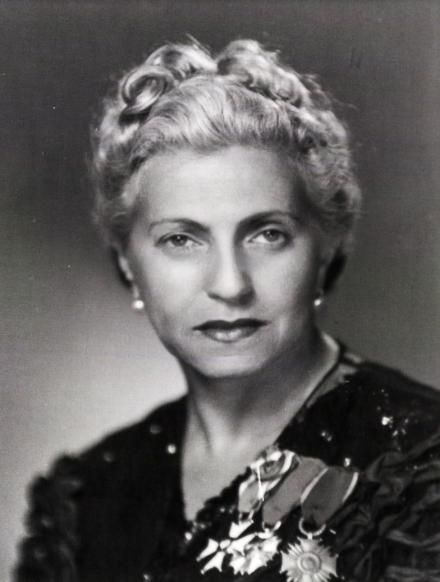#Ida Kaminska
Text


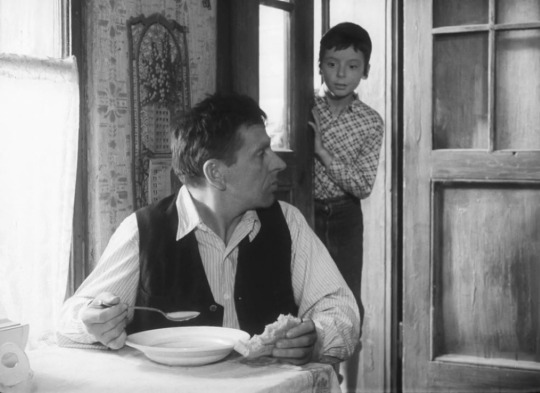
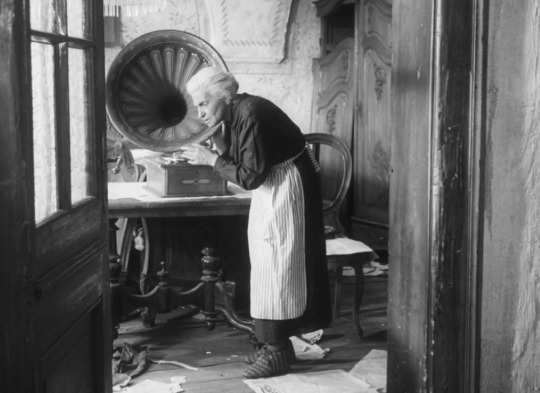
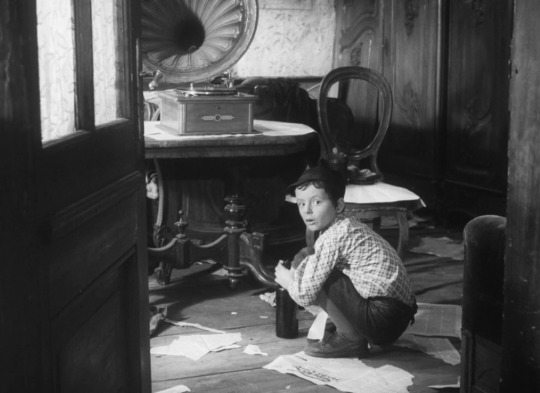

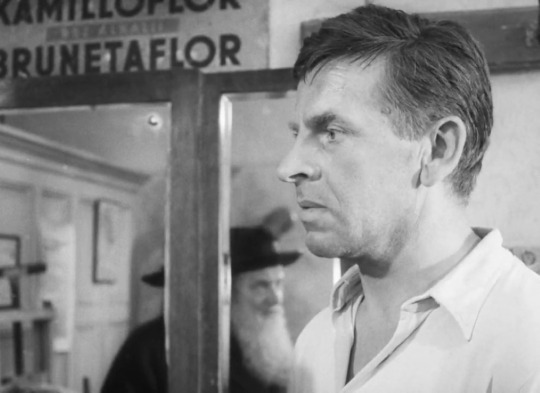
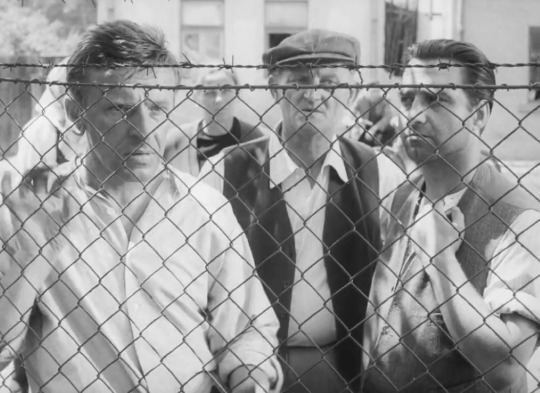
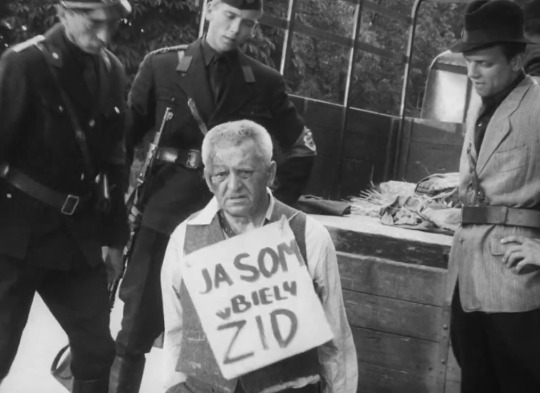
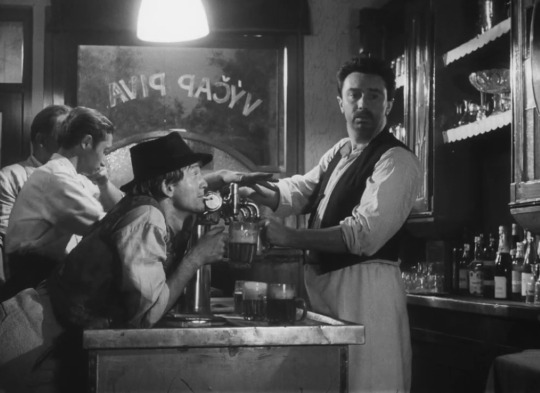
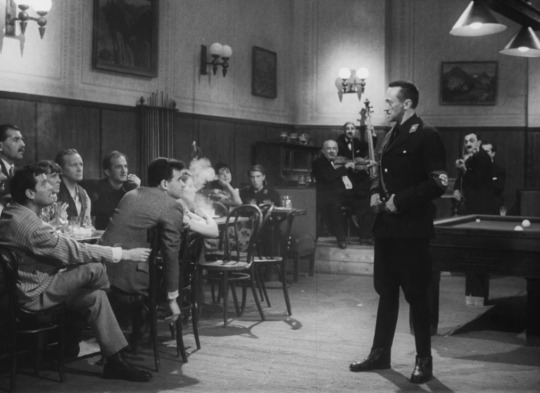



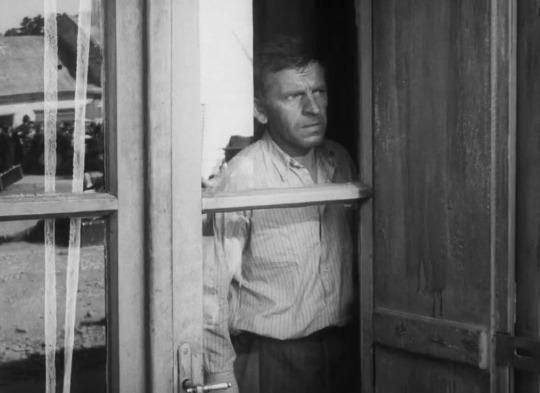

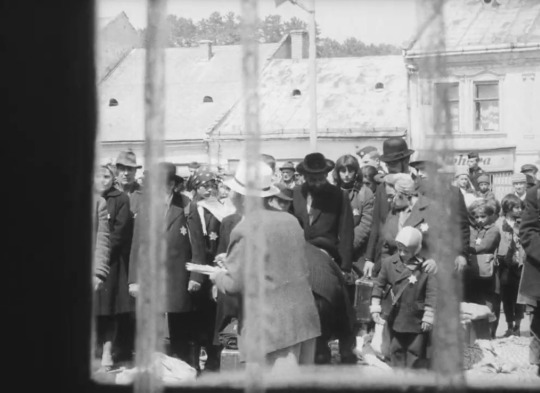
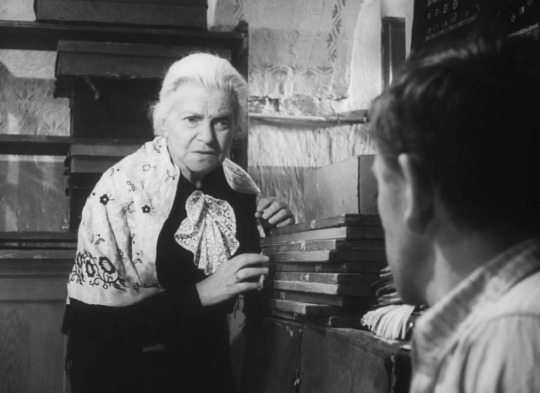
obchod na korze, ján kadár, elmar klos 1965
#obchod na korze#the shop on main street#ján kadár#elmar klos#1965#ida kaminska#jozef kroner#baumeister solness#hans schweikart#woyzeck#werner herzog#die blechtrommel#volker schlöndorff#vargtimmen#tystnaden#ingmar bergman#eraserhead#david lynch#the pianist#roman polanski#david#peter lilienthal#die rebellion#michael haneke#radetzkymarsch#michael kehlmann#the great dictator#charlie chaplin#bible#genesis 11-9
4 notes
·
View notes
Text
INDIES TOP 40 AMERICAN ACTRESSES OF ALL TIME !
As most of y'all enjoying Indies produce all these years, would've sensed for long, we at Indies are a bit classical at heart !
And in keeping with those richly steeped tastes, bring to you our latest (& I'm sure hugely interesting & awaited) all-time historic list!
The Indies Top 40 American Actresses Of All Time !
(And only reason Indies don't extend this list any further, is for the sheer impossibility of it!..the gulf btwn below esteemed list & most other actors through the century of American cinema, assessed, being just too wide, upto 150+ spots atleast, to carry on further.)
Enjoy !
👇
1. Barbara Stanwyck
2. Olivia de Havilland
3. Geraldine Page
4. Audrey Hepburn
5. Vivian Leigh
6. Greer Garson
7. Ginger Rogers
8. Elizabeth Taylor
9. Katharine Hepburn
10. Kate Winslet
11. Julia Roberts
12. Norma Shearer
13. .Juliette Binoche
14. .Ellen Burstyn
15. .Faye Dunaway
16. .Gwyneth Paltrow
17. .Maggie Smith
18. .Jean Simmons
19. .Sally Field
20. .Goldie Hawn
21. .Julie Andrews
22. .Merle Oberon
23. .Luise Rainer
24. .Michelle Pfieffer
25. .Wendy Hiller
26. .Gene Tierney
27. .Jane Wyman
28. .Catherine Deneuve
29. .Helena Bonham Carter
30. .Genevieve Bujold
31. .Sigourney Weaver
32. .Holly Hunter
33. .Jessica Lange
34. .Ida Kaminska
35. .Bette Davis
36. .Julie Christie
37. .Carrie Snodgress
38. .Ingrid Bergman
39. .Jill Clayburgh
40. .Lucille Ball
41. Jennifer Jones
2 notes
·
View notes
Text
The Angel Levine (1970)
Films starring #ZeroMostel including The Angel Levine by #JanKadar starring #HarryBelafonte and #IdaKaminska
JAN KADAR
Bil’s rating (out of 5): BB.5
USA, 1970. Belafonte Enterprises. Screenplay by Bill Gunn, Ronald Ribman, based on a story by Bernard Malamud. Cinematography by Richard C. Kratina. Produced by Chiz Schultz. Music by Zdenek Liska. Production Design by George Jenkins. Costume Design by Domingo A. Rodriguez. Film Editing by Carl Lerner.
Zero Mostel walks into the welfare office to tell his…

View On WordPress
#Anne Jackson#Barbara Ann Teer#Belafonte Enterprises#Bernard Malamud#Bill Gunn#Carl Lerner#Chiz Schultz#Domingo A. Rodriguez#Eli Wallach#George Jenkins#Gloria Foster#Harry Belafonte#Ida Kaminska#Jan Kadar#Kathy Shawn#Milo O&039;Shea#Richard C. Kratina#Ronald Ribman#Sam Raskyn#Stephen Strimpell#Zdenek Liska#Zero Mostel
2 notes
·
View notes
Text
THE ANGEL LEVINE Review - ****
THE ANGEL LEVINE Review – ****
Would we recognize an angel if we saw one, or believe them if they introduced themselves? If we become angels when we die, how much of ourselves do we take with us? Would we accept a miracle if we saw one? Would it make us believe? Or do you need to believe before you can recognize a miracle for what it is?
These are the questions The Angel Levine poses to us, but it’s not the kind of film that…
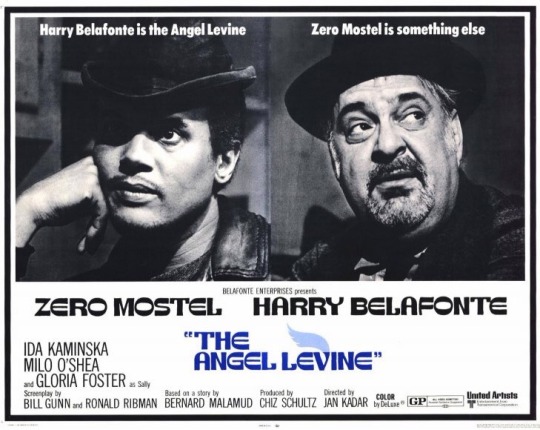
View On WordPress
#70s films#Bernard Malamud#Bill Gunn#Film Reviews#Gloria Foster#Harry Belafonte#Ida Kaminska#Jan Kadar#Jewish literature#Judaism#Milo O’Shea#Ronald Ribman#The Angel Levine#The Magic Barrel#Zero Mostel
1 note
·
View note
Photo
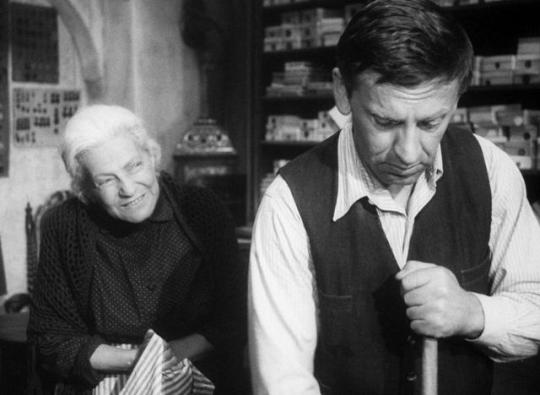
The Shop on Main Street (1965, Czechoslovakia)
Putting “New Wave” in a sentence referring to a film movement is asking for trouble. Whether the New Wave is French, Iranian, or Japanese in origin, the term implies a series of films and filmmakers breaking narrative and aesthetic norms in conventional moviemaking, exalting innovation. New Wave directors from those respective countries include Jean-Luc Godard and Agnès Varda; Forough Farrkohzad and Mohsen Makhmalbaf; Nagisa Oshima and Seijun Suzuki. For those I have just listed, I am not denying their talents, their importance to film history. But show any of their films to someone who is less familiar with these New Waves, without the contextual understanding of the environment their works were released, and befuddlement and distaste will likely abound. Rare is the New Wave film that can be shown to unfamiliar eyes and minds without appropriate context.
Ján Kadár and Elmar Klos’ The Shop on Main Street (adapted from Ladislav Grosman’s novel of the same name) is sometimes considered a part of the then-concurrent Czechoslovak New Wave. And if one considers it part of that New Wave, then it is one of the more comprehendible, technically grounded films of that movement. It certainly qualifies as one of those New Wave exceptions – a film that can be digested by a viewer not accustomed to older movies or has any experience with Czech- or Slovak-language cinema. I consider The Shop on Main Street a Czechoslovak New Wave film. When one looks beneath its World War II-era surface, its politics extend beyond its condemnation of Nazi Germany’s treatment of Jews and the local Slovak population. Though rooted in the nation’s past, it was as timely as Věra Chytilová’s Daisies (1966) upon release. The film outdoes many New Wave films by playing fast and loose with genre expectations: a black comedy in the first half, a tragedy in the second. Nazi Germany’s state-executed hatred, if not including the fringe groups inspired by their example, is no longer; Czechoslovakia has long been split in two. The Shop on Main Street and its censure of those who manipulate the oppressed, while pointing their fingers elsewhere.
In March 1939, the Slovak Republic was carved out of Czechoslovakia as a client state of Nazi Germany. The Slovak Republic never received recognition from the Allies (with the brief exception of the USSR until they were invaded by Germany), and they soon set about the process of Aryanization. Aryanization was a process in which Jewish property and businesses were to be put into “Aryan” ownership so as to “de-Jew” the economy. In The Shop on Main Street, Slovak carpenter Anton "Tóno" Brtko (Jozef Kroner) is offered by an official the ownership of a button store owned by the elderly, near-deaf Rozália Lautmannová (Ida Kamińska). Mrs. Lautmannová, a widow, is unaware that there is a war, that Czechoslovakia is being occupied by invaders intent on seizing her business and exterminating her fellow Jews. She welcomes Tóno as a helper and believes – mishears, really – that he is her nephew. Tóno, thrown into this awkward situation, soon learns that Mrs. Lautmannová’s store is not profitable and depends on community donations. The Jewish community implore Tóno to stay as de jure owner of the store, for fears that a more exploitative owner might be selected were he to give it up. Tóno agrees, accepting a small payment, and dedicating himself to the store’s and Mrs. Lautmannová’s welfare. They find time to see the humor in her mishearing and his stubbornness. In the final scenes, Tóno and Mrs. Lautmannová must make a horrific decision.
Czechoslovakia’s communist government, during the Czechoslovak New Wave, frowned upon films that could be construed as anarchic, insurrectionist, troublemaking. The Shop on Main Street – unlike many of its contemporaries – avoided government meddling. The villains here are the Nazis, whom communist forces across the Eastern bloc fought against. On its surface, The Shop on Main Street assigned no criticism towards Czechoslovakia’s communist regime or to communism. Yet the braggadocious Nazis are a minority in this film. A detestable sociopolitical minority becomes empowered when others sympathize with them, rationalize their prejudices and atrocities, and fail to defend the targets of that minority. We see non-Jewish Slovaks shrugging their shoulders about Aryanization. Why not pocket some extra money with this new policy, they reason, in a sluggish economy and a better-armed invading force now patrolling their streets? These are economically desperate times for non-Jewish Slovaks (and, if my hunches are correct, probably even more so for Jewish Slovaks), so they will use whatever programs necessary to survive, rooted entirely in self-interest.
The communist censors probably thought something, while viewing The Shop on Main Street, that is resurgent in modern-day Europe: that Nazi Germany’s anti-Semitic policies (from Aryanization to concentration camps and much more) were Germany’s responsibility and no one else’s. Complicity with the Nazi agenda is being debated among historians, politicians, and within the 125-minute runtime of The Shop on Main Street. For Tóno, the invaders inspire mutterings out of earshot and disdainful moues. His wife, Evelína (Hana Slivková), is concerned only about money – she is thrilled when she learns that the Aryanization program will give them a financial cushion (so she thinks), never contemplating the possibility this it is the beginning of the Jewish community’s ruin. Has she ever known someone from the community? It is not clear. Tóno’s non-Jewish acquaintances, too, are unfazed by these proclamations. Life is already difficult in the Slovak Republic (Czechoslovakia itself was not formed because its patchwork of ethnicities had common political pursuits and aspirations, but due to expedience and tensions with other ethnic groups), and any economic lifeline that will be offered to the non-Jews will be taken. Are those who support and/or participate in Aryanization irredeemable, given their desperation and the Nazi aim to manufacture conflict between Jews and non-Jews? Is Tóno an accessory of the Nazis?
These are questions that may seem small when grasper the enormity of the Holocaust. But that is the intention of directors Kadár and Klos, who often worked together co-directing films. In his directorial statement for the film in the New York Herald Tribune’s January 23, 1966 issue, Kadár (whose parents and sister were murdered at Auschwitz) writes that he was the principal director for this film – Klos agreed to be a sort of secondary director for The Shop on Main Street, deferring to Kadár because of his personal connection to the material. Klos also notes:
[Klos] knows that I am not thinking of the fate of all the six million tortured Jews, but that my work is shaped by the fate of my father, my friends’ fathers, mothers of those near to me and by people whom I have known. I am not interested in the outer trappings—figures, statements, generalizations. I want to make emotive films.
This is not an epic film intended to sweep viewers into the broadest discussions of the Holocaust. The Shop on Main Street is foremost a film about an unlikely connection – one separated by age, language, and faith – that is formed when exploitation would be so much easier. This is where The Shop on Main Street derives its pathos, in places where despair ought to triumph.
When Tóno meets Mrs. Lautmannová for the first time, he is surprised to see how disconnected she is from the world. She knows little of what is happening outside of the storefront door, and she delights in the company of her few – but dedicated – customers and the letters she receives from a relative in America (she hasn’t received their letter in some months). She closes the store on the Sabbath (sundown on Friday to sundown on Saturday), retreating to her bedroom to pray and to read. Her friends in the Jewish community realize her frailty and lack of understanding, deciding to protect her from the news of pogroms and war. When lacking any authority to make laws or force political change, all they possess are their words and neighborliness – which they share with Tóno freely. Tóno is struck by their generosity, and his friendship with Mrs. Lautmannová grows. Ida Kamińska (the Polish actress was sixty-six years old when The Shop on Main Street was released, and nicknamed the Mother of the Jewish Stage) and Jozef Kroner (a star of numerous Slovak films, but this is his most recognized work) play off each other. In a series of successive (gentle and dark) misunderstandings, these two commoners are each other’s foils. He is a drinker, impatient, and needs to learn diplomacy. She is kind, religious, and concerningly naïve.Their performances are incredible, helping The Shop on Main Street pull off its tonal transitions that should have seen this film crumble into treacle.
youtube
Zdeněk Liška’s score to The Shop on Main Street alternates between foreboding string lines wracked with minor key, string-crossing double stops signaling the precariousness of the story’s developments, the unusual situation the characters find themselves in, and emotional torment. A memorable, carnival-like march that opens the film is used to stunning effect when employed ironically. Liška’s cue placement helps Kadar and Klos achieve the respective comedic and dramatic moods that the screenplay and actors so nimbly establish.
Lengthy is the canon of films depicting and commenting on the Holocaust. The Shop on Main Street, avoiding extensive declarations, is one of the earliest films on that list. Its examinations on complicity and the extent of human callousness reverberate to a present where Holocaust denial and blame-shifting continues to rail against the truth of untold millions and their descendants. It is a tremendous film, one containing unexpected power through its performances and the impossible situations the main characters find themselves in. Bathed in white, the final seconds of The Shop on Main Street show a wonderful dream, one that could only be crafted by a director pouring his decades-long grief for his parents and sister into his work. As the camera dances to the right, away from the shop on main street, we see in the background the shops and homes of the Jewish community now silent.
My rating: 10/10
^ Based on my personal imdb rating. The Shop on Main Street is the one hundred and fifty-eighth feature-length or short film I have rated a ten on imdb.
#The Shop on Main Street#Jan Kadar#Elmar Klos#Ida Kaminska#Jozef Kroner#Hana Slivkova#Martin Holly Sr.#Frantisek Zvarik#Ladislav Grosman#Zdenek Liska#Vladimir Novotny#Czechoslovak New Wave#TCM#My Movie Odyssey
2 notes
·
View notes
Photo
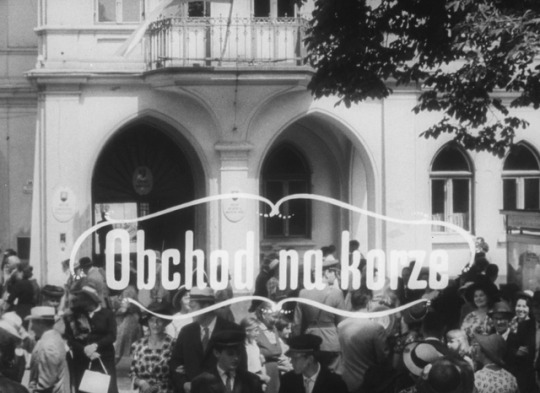

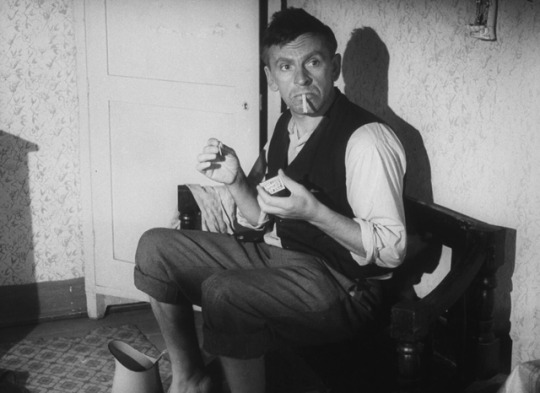
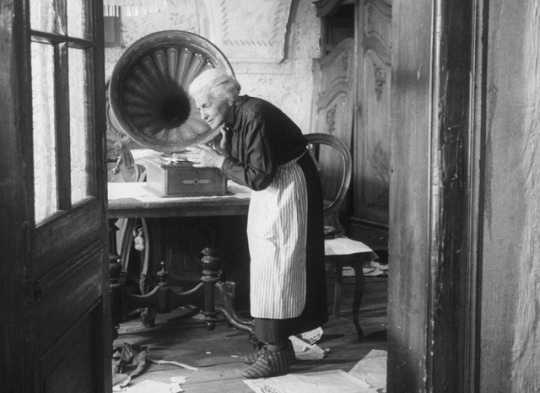
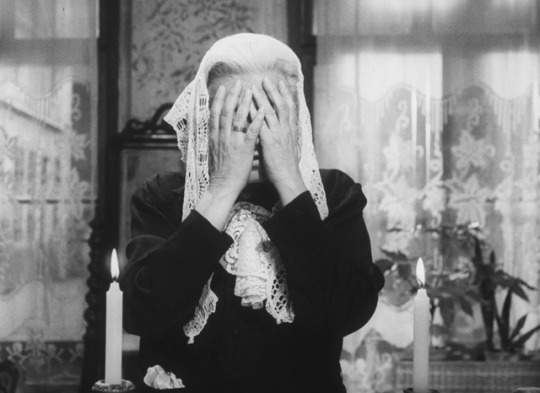
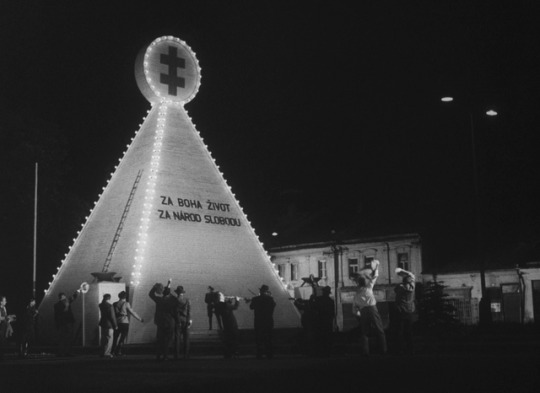




Obchod na korze, 1965
Dir. Ján Kadár, Elmar Klos
32 notes
·
View notes
Photo

Obchod na Korze ( Ján Kadár, Elmar Klos , 1965)
4 notes
·
View notes
Photo
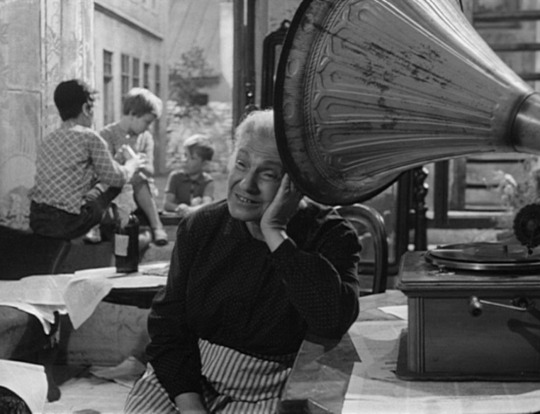
Ida Kaminska, Screenshot from Ján Kadár and Elmar Klos’ “Obchod na korze” (The Shop on Main St) 1965
In my opinion, maybe the most heartbreaking film ever shot. Winner of the Best Foreign Film Oscar in 1965.
76 notes
·
View notes
Text
just making a placeholder post here so my horrible little pedant impulses do not stay stoppered up inside my psyche & make me explode like a beached whale carcass...Repeat After Me, Like A Child With A Piece Of Chalk, Dutifully Copying A Disciplinary Phrase Onto The Blackboard:
We Will Not "Well, AK-Shully..." A Distant Relative Of Ida Kaminska On Yom HaShoah About Ongoing Collaborations Between The Warsaw Yiddish Theater & Its Polish Counterparts, Facilitated In No Small Part By The Influence Of Assimilated Polish Jews Like Leon Schiller & Mark Arnshteyn/Andrzej Marek, But Also Ethnic Poles Like Irena Solska, Even If These Efforts Were By No Means *Mainstream*, Did Often Meet With State Censorship, & Certainly Do Not Negate The Overall Antisemitism Of The Interwar And Especially Postwar Polish Theater Scene, Including The Press
Yes There Is Some Revisionism Re: Poland Always Having Valued Its Yiddish Theater, But It's Also Reductive To Claim Yiddish Theater Was Always Made Marginal & Was Never Valued In Poland, Especially Vis-a-Vis Other Directors, Actors, Etc.
saying "i wish more people talked about my extremely niche research topic" is a real monkey's paw situation if ever there was one, i tell ya what
5 notes
·
View notes
Text
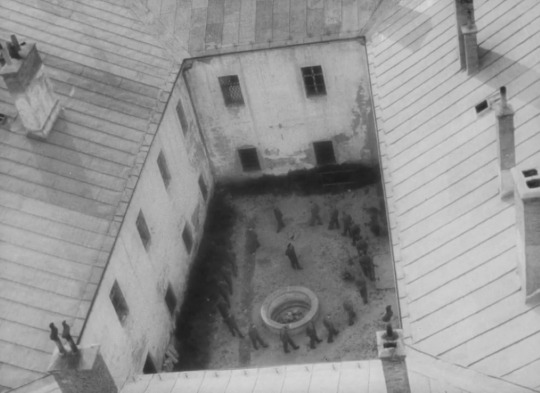
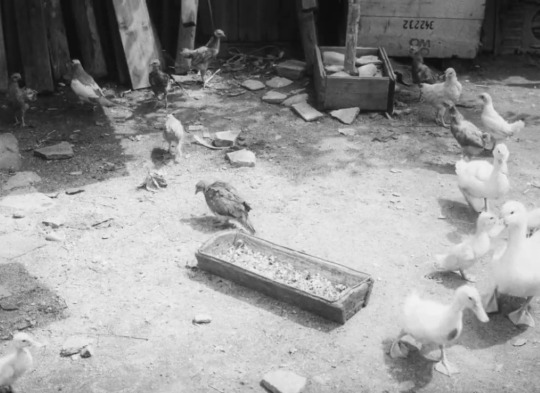


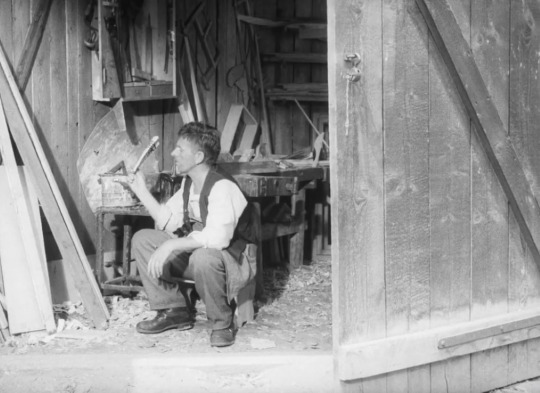
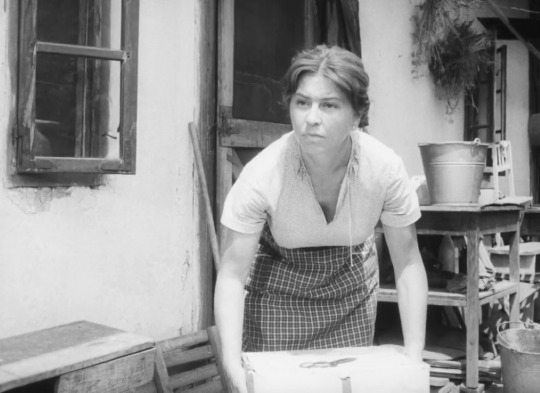
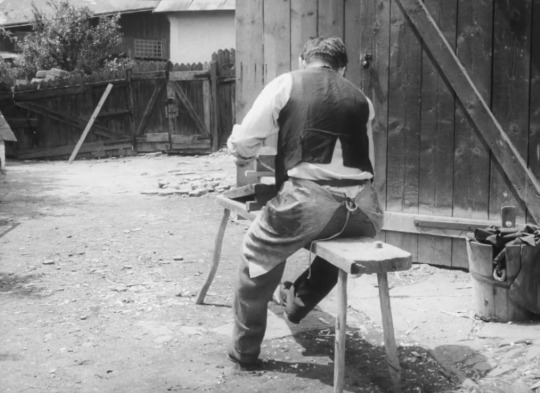
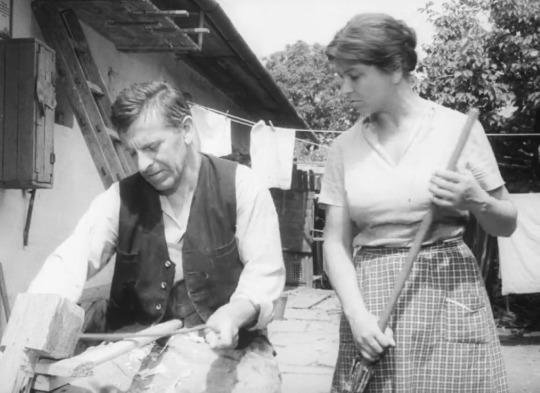




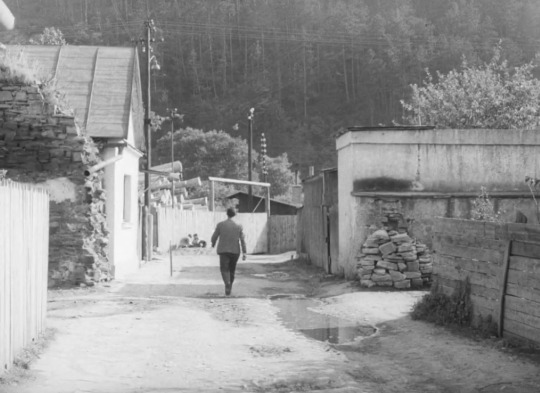
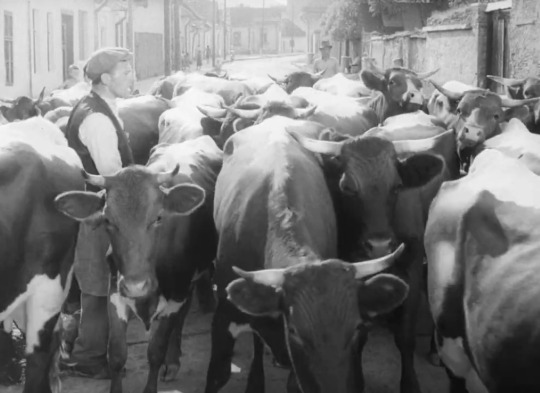
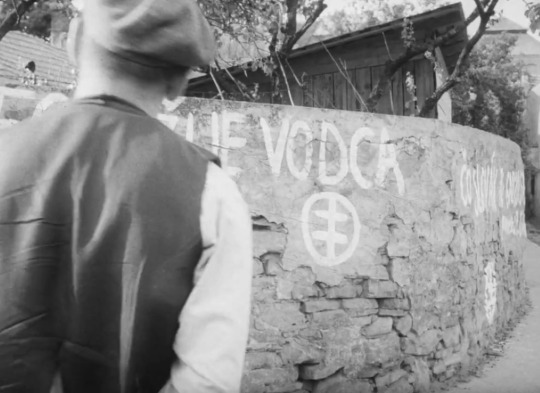


obchod na korze, ján kadár, elmar klos 1965
#obchod na korze#the shop on main street#ján kadár#elmar klos#1965#ida kaminska#jozef kroner#frantisek zvarík#juraj herz#woyzeck#werner herzog#1979#klaus kinski#eva mattes#orwo#about photography#material#buw#café de paris#zs23#jewish luck#vargtimmen#eraserhead#about horses rabbits and man
0 notes
Photo
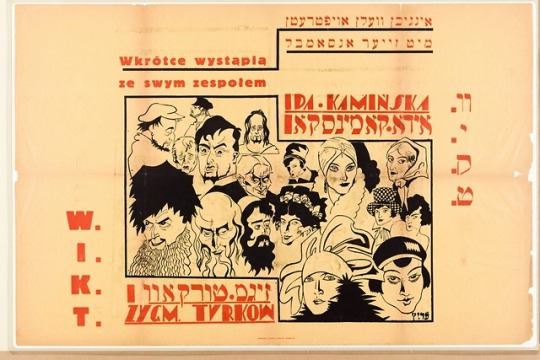
A beautiful theatre poster by Fritz Kleinman for Ida Kaminska’s production of Mir froyen (We, Women), a radical feminist work penned in Polish by Maria Morozowicz-Szczepkowska.
More: Visual Artists and Yiddish Avant-garde Theatre in Poland by Alyssa Quint
https://yiddishstage.org/avant-garde-yiddish-theater-in-interwar-poland
202 notes
·
View notes
Text
International Day of Remembrance of Holocaust
On 27th January 2018, the International Day of Remembrance of Holocaust Victims, a heritage tram, bearing the Star of David, travelled along Warsaw's streets, along the borders of the former Warsaw Ghetto. The empty tram symbolised the tram which travelled through the Warsaw Ghetto. It was intended to remind the capital's residents of their Jewish neighbours who, during World War II, were murdered in extermination camps and ghettos. The tram's route will follow Plac Narutowicza - Filtrowa – Nowowiejska – Marszałkowska – Andersa – Stawki – al. Jana Pawła II – Popiełuszki – Metro Marymont – Popiełuszki – al. Jana Pawła II – Okopowa – Towarowa – Plac Zawiszy - Plac Narutowicza.
On this day, at 6:00pm, the public is invited to participate in the "Light of Memory" by lighting a candle in the window of their home. This light will symbolise our solidarity with and memory of the victims of the Holocaust.
The main commemoration of the International Day of Remembrance of Holocaust Victims will take place on 29th January at 3:00pm at the Ghetto Heroes. During this annual ceremony, wreaths will be laid and prayers recited.
In addition, on 29th January, at 6:00pm and 8:00pm, at the Estera and Ida Kaminska Jewish Theatre - Yiddish Cultural Centre, there will be performances of Ginczanka. Chodźmy stąd, directed by Krzysztof Popiołek, will take place. (Entry by invitation).
0 notes
Text
The Angel Levine Official Trailer #1 – Harry Belafonte Movie (1970) HD
Subscribe to TRAILERS: http://bit.ly/sxaw6h Subscribe to COMING SOON: http://bit.ly/H2vZUn Subscribe to CLASSIC TRAILERS: http://bit.ly/1u43jDe Like us on FACEBOOK: http://goo.gl/dHs73 Follow us on TWITTER: http://bit.ly/1ghOWmt The Angel Levine Trailer – Directed by JÁn KadÁr and starring Zero Mostel, Harry Belafonte, Ida Kaminska, Milo O’Shea, Gloria Foster. Zero Mostel plays an elderly Jew named Morris Mishkin, whose […]
from Akron City Guide https://www.akronarchangels.com/films-theatres/the-angel-levine-official-trailer-1-harry-belafonte-movie-1970-hd/
0 notes
Photo
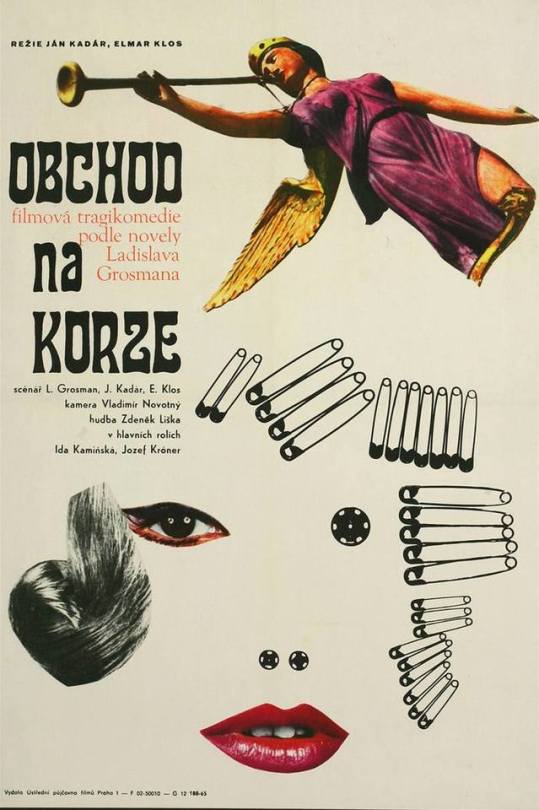
# 157 - The Shop on Main Street (Ján Kadár & Elmar Klos, 1965)
#the shop on main street#ján kadár#elmar klos#ida kaminska#jozef kroner#hana slivková#martin hollý#film#films in 2018#movie#cadwalladery
7 notes
·
View notes
Text
The Shop on the High Street
An Oscar winner, this Slovakian masterpiece gets the royal treatment by Second Run The post The Shop on the High Street appeared first on The Digital Fix. http://dlvr.it/MFL2lZ
0 notes
